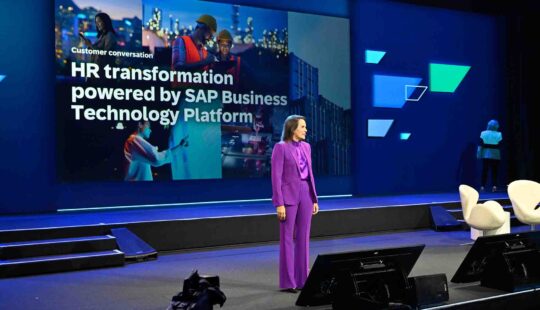Candidate experience impacts the entire business, not just the recruiting team. Qualtrics research shows that companies with above-average experience management are 52% more likely to report above-average revenue growth and 48% more likely to report above-average profitability.
Candidates are also customers, so poor candidate experiences can impact customer brand reputation. Virgin Media famously found they were losing over $5 million per year in lost sales revenue because candidates who had a poor candidate experience became brand detractors and canceled their subscriptions.
Still, most companies get candidate experience wrong. Something that seems like a no-brainer, like communicating with candidates, doesn’t happen. New research conducted by Qualtrics and SAP found 64% of job seekers have been ghosted by a company they interviewed with (40% say they often don’t hear back, 24% say they never hear back). Or it could be something more nuanced, like long applications preventing people from applying. The 2022 Greenhouse Candidate Experience Report found that 70% of job seekers will not submit a job application if it takes more than 15 minutes to complete.
What is worse is that companies think they are getting candidate experience right. CareerBuilder research shows that 78% of organizations believe they do a good job setting expectations upfront with candidates and communicating throughout the hiring process, but only 47% of candidates agree, creating a large candidate experience gap.
If companies don’t close the candidate experience gap, they will see higher unwanted candidate withdrawal, lower offer acceptance rates, and higher cost per hire. Identifying an experience gap is only half the challenge; organizations often lack adequate insights to know what levers will close the experience gap.
Specifically, there are three main barriers:
- Lack of comprehensive experience data. Most organizations collect data at only one point in time, usually at the end of the hiring process. This can introduce bias because organizations miss out on experience data from candidates earlier in the process; having a listening post only at the end of the hiring process ignores an experience gap that may exist earlier in the process, like during application or interviewing.
- Constrained recruiting teams. Recruiters are in high demand; they do not have time to do additional manual work. More listening posts should not mean more work for them. Recruiters need technology that helps them be more efficient and spend their energy where there is the biggest payoff.
- Inability to identify worthwhile insights and take action. Recruiting and talent acquisition teams are already sitting on loads of data. They have data in their candidate directory and applicant tracking systems, and adding on experience data will not necessarily lead to more insights and action. Talent acquisition teams need help synthesizing data from disparate locations, so they can focus their attention where it is needed most and take action sooner.
To solve these challenges, Qualtrics and SAP SuccessFactors are deepening integrations by releasing a new automated data synchronization so that data flows more easily, quickly, and securely from SAP SuccessFactors Recruiting into SAP Qualtrics Candidate Experience. This integration enhancement combined with existing embedded feedback opportunities make it easier for recruiters and talent acquisition leaders to better understand candidates’ experiences and more quickly take action to improve them.
Automating Secure Data Transfer to Enhance Candidate Experiences
Automated data transfer connects the deep operational data from the SAP SuccessFactors Recruiting module — like candidate demographics, stage in the hiring process, hiring manager, job location, and job level — and integrates it with the holistic experience data from Qualtrics — like how candidates evaluate fairness, clarity, technology, and timeliness in the hiring process. This pre-built integration gives joint SAP SuccessFactors and Qualtrics customers a unified view of their operational and experience data, ultimately enabling talent acquisition leaders to optimize their candidate experience.
Available in the second half of 2022 to joint SAP SuccessFactors Recruiting and SAP Qualtrics Candidate Experience customers, this improved integration securely and seamlessly automates data transfers between recruiting and candidate directories for greater data accuracy. This improves upon existing data syncing capabilities to be even more efficient. Data integration is critical because it offers talent acquisition teams:
- Up-to-date candidate directory: Gone are the days of manually exporting, scrubbing, and uploading spreadsheets because the workflow automates data transfer and keeps records up-to-date. The connection enables talent acquisition teams to spend more time on what matters most by reducing manual administration work.
- Automated in-moment listening: Embedded feedback opportunities within SAP SuccessFactors Recruiting captures candidate sentiment at key moments and the updated workflow automates survey distribution, so when a candidate progresses in the hiring process, a survey is distributed in-moment. This minimizes manual work and gathers candidate feedback in a timely manner to help ensure authentic responses that recruiters can respond to and act on immediately.
- Combined operational and experience data to analyze: Syncing candidate metadata, like demographics and job details, with candidate experience data, like perception of fairness, allows talent acquisition leaders to easily filter, analyze, and compare experience data from different views to make data-driven decisions using sophisticated analytics and dashboards.
New integrations continue to strengthen the experiences delivered by SAP SuccessFactors Recruiting and SAP Qualtrics Candidate Experience. Embedded listening and enhanced data connections make it easier, faster, and more secure for CHROs and talent acquisition leaders to not only understand who their candidates are and in what stage of the hiring process they are, but also why candidates are having certain experiences and where to take action. For example, joint customers can discover why women 25 to 34 years old are more likely to decline offers and then implement targeted changes that improve experiences for future candidates of that specific demographic, reversing the negative acceptance trend.
Using experience management solutions from SAP and Qualtrics to understand and improve the candidate experience allows organizations to design a talent strategy that values the employee voice at every key moment in the talent lifecycle — right from the start.
Learn more about SAP Qualtrics Candidate Experience.
Amanda Crittenden is global solution marketing lead for Employee Experience Management at SAP SuccessFactors.
Emily Lambert is product marketing manager for EX at Qualtrics.
Job Seekers Rush to Find New Opportunities with Better Pay and Work-Life Balance



